If you’re looking for a lovely, soft, creamy buttercream that is not overly sweet to top your latest batch of cupcakes, look no further. Last week I shared my recipe for pastry cream and I hinted at a way it can be used to make buttercream, so today I’m back with this German Buttercream recipe.
You’ll love this Swiss meringue buttercream too or my favourite vanilla bean frosting.
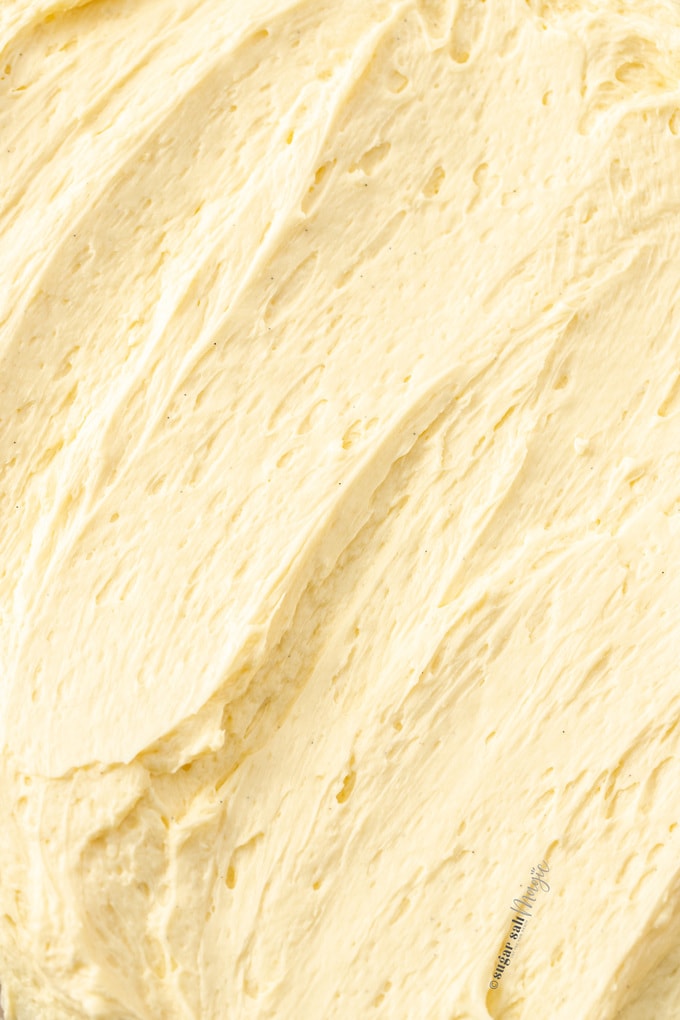
I have so much love for this frosting and it’s my second favourite (after the ermine frosting that I so adore). In fact, German buttercream is very similar to ermine (aka flour frosting) in process and texture.
- soft and creamy
- not super sweet
- easy to make & pipeable
- totally silky smooth
- rich and buttery
What is German Buttercream?
German buttercream is a buttercream frosting made by beating together a pudding (creme patissiere / pastry cream) base and butter. You may also know it as custard buttercream or pudding buttercream for this reason. It is quite a stable buttercream due to the cornflour in the pudding offering extra structure.
This buttercream has a silky smooth texture and is lighter on the sweetness than a traditional buttercream or American buttercream. It takes a couple of extra steps to make but is very simple and worth every second of it.
German Buttercream vs Ermine Frosting
- German buttercream: starts with a custard base, comprising of sugar, cornflour, egg yolks, milk and vanilla. These ingredients are cooked together to form a very thick custard that, once it cools to room temperature, is added to butter.
- Ermine buttercream: starts with a pudding base made from milk, flour and sugar. It has the same amazing texture as German and a very similar process. Still my favourite, I’ll be adding a post in the near future with all the ins and outs to ermine.
How to make German Buttercream
- Make a simple custard base which is a combination of egg yolks, cornflour, sugar, milk and vanilla. See my post on How to make Pastry Cream (Creme Patissiere) for all the steps.
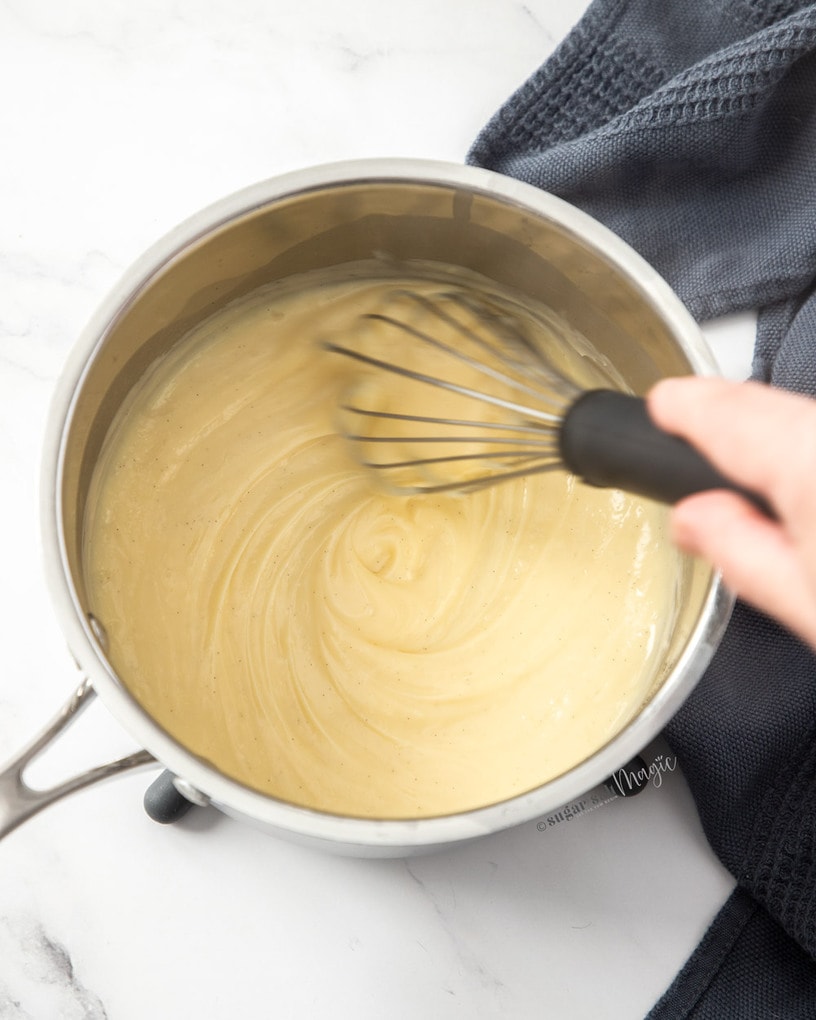
- Let the custard cool to room temperature with plastic wrap pressed right to the surface.
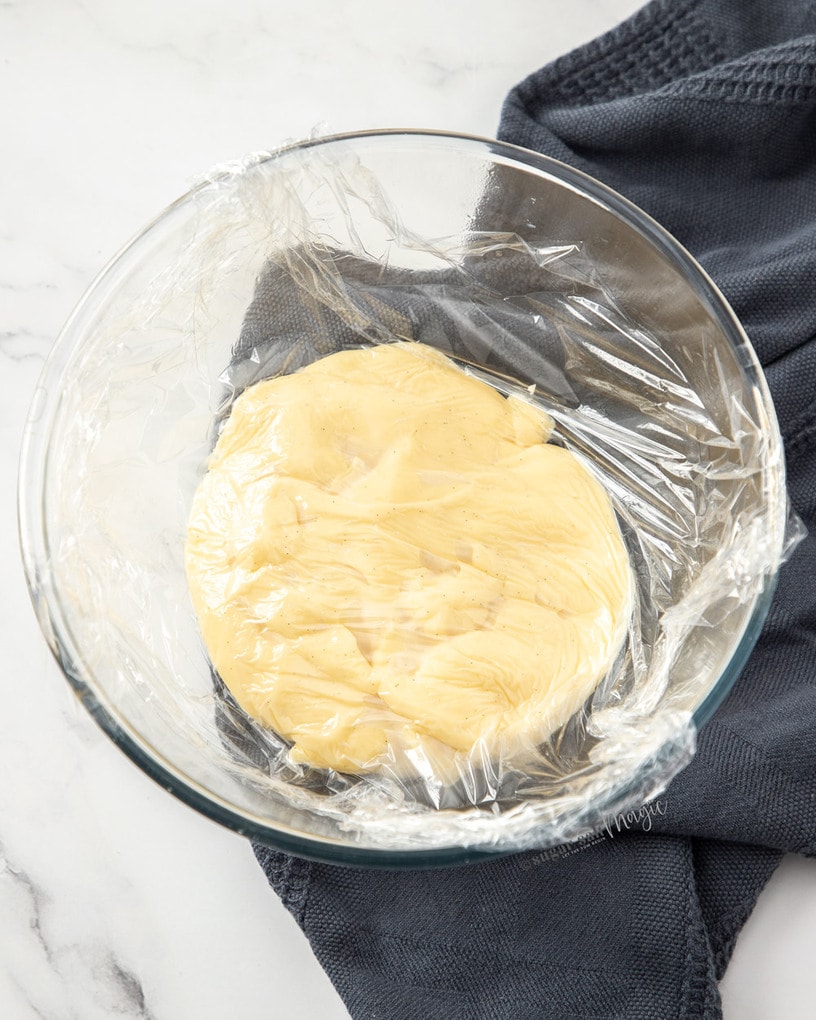
- Beat the butter and a little sugar until it’s whipped and creamy
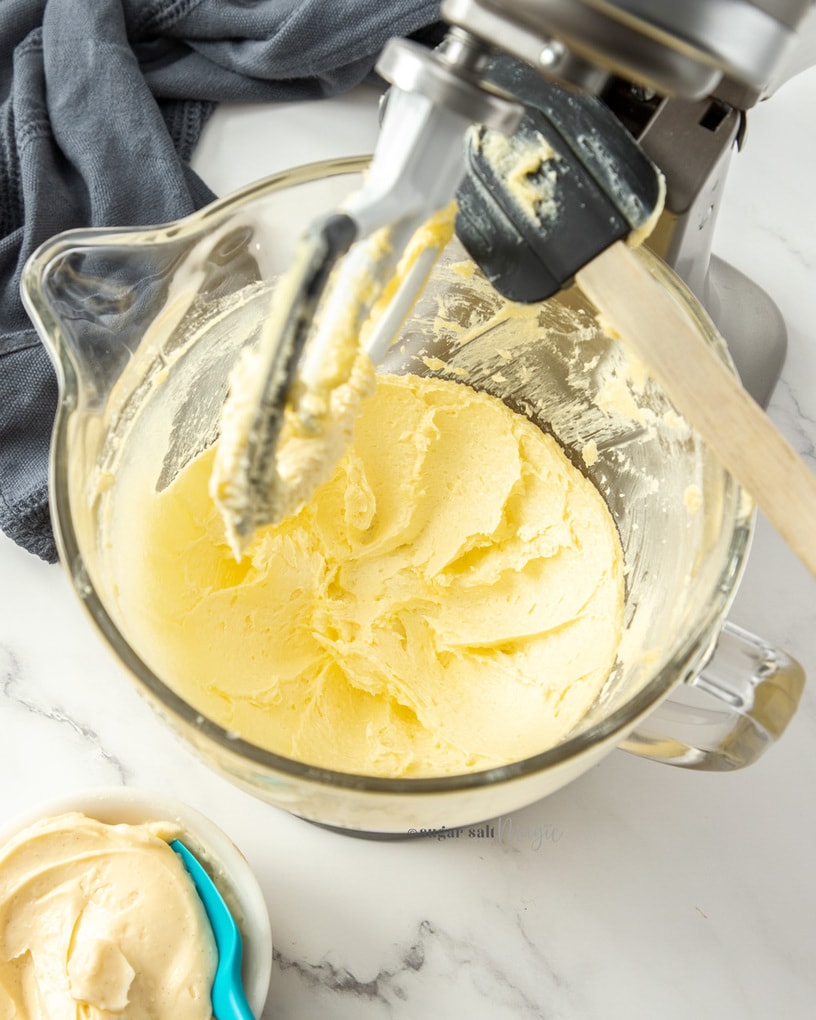
- Add the room temperature pastry cream one spoonful at a time, beating for a few seconds after each to make sure they’re incorporated.
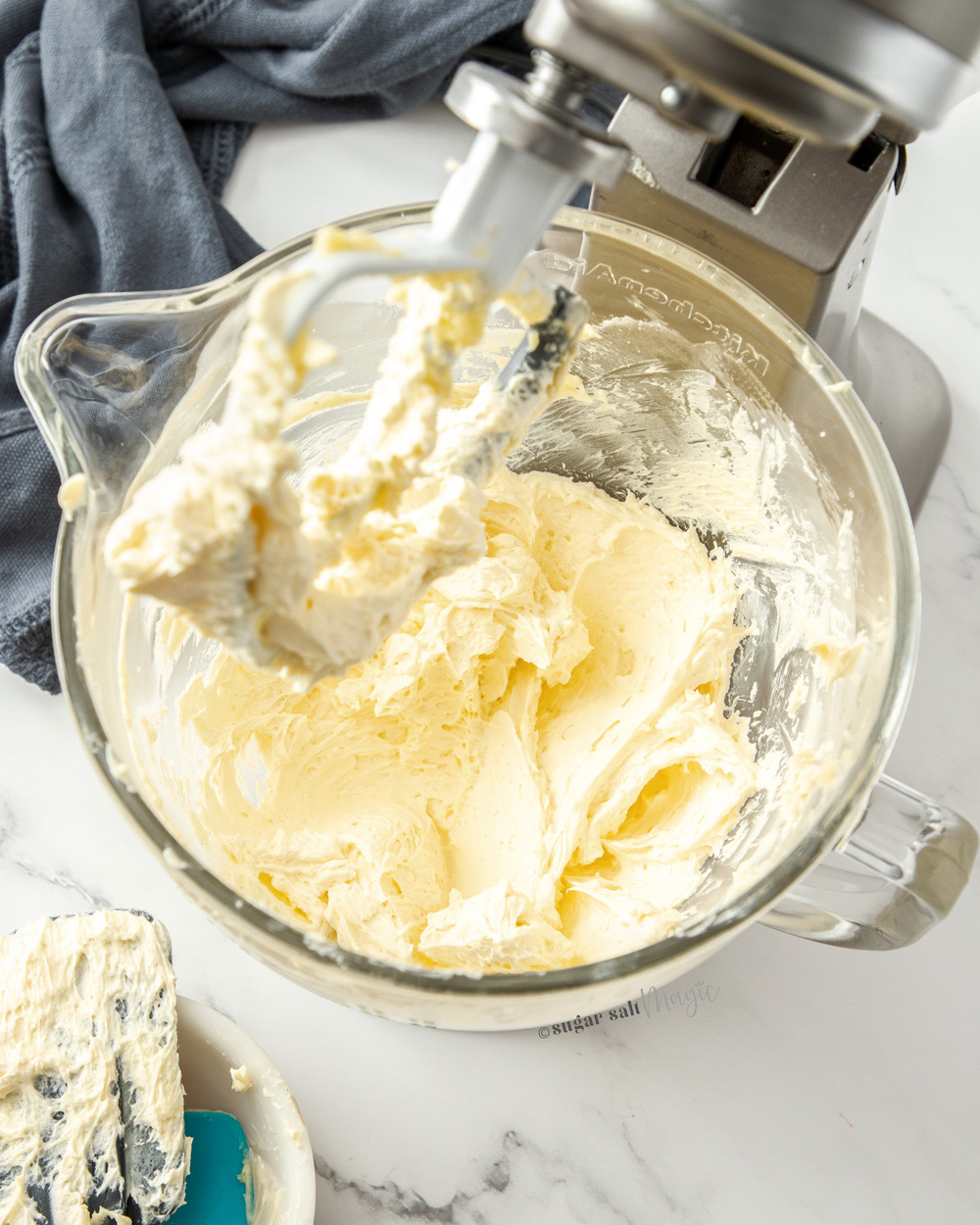
- Mix through a touch of salt, then use a spatula to stir and press the frosting against the bowl.
Now you’ll have a super dreamy, creamy frosting that tastes absolutely diving and can be used on cupcakes or layer cakes at will.
You can even make a chocolate German buttercream using my chocolate pastry cream as the base!
Tips and tricks for perfect German buttercream
- Don’t use powdered sugar – it must be either regular granulated sugar or caster (superfine) sugar. Don’t worry, it won’t be gritty at all.
- Divide the sugar – I use most of the sugar in the custard but reserve a little to help whip the butter. The friction helps the butter get nice and fluffy.
- Cover the custard with plastic wrap – and it’s really important to make sure the plastic wrap is pressed right to the surface as it will stop a skin from forming.
- Use the custard at room temperature – whether you’re waiting for it to cool after making it or taking it out of the fridge, make sure the custard is at room temperature before you use it. Too warm or too cold may cause the butter to melt or firm up which will in turn mean a split, greasy or lumpy buttercream.
Can German buttercream be frozen
While you can’t freeze the pastry cream on it’s own, the finished buttercream will freeze quite well for up to 2 months. It is, however, a little temperamental after being frozen so make sure to let it thaw in the fridge overnight and give it a good few hours to come to room temperature before you re-whip it.
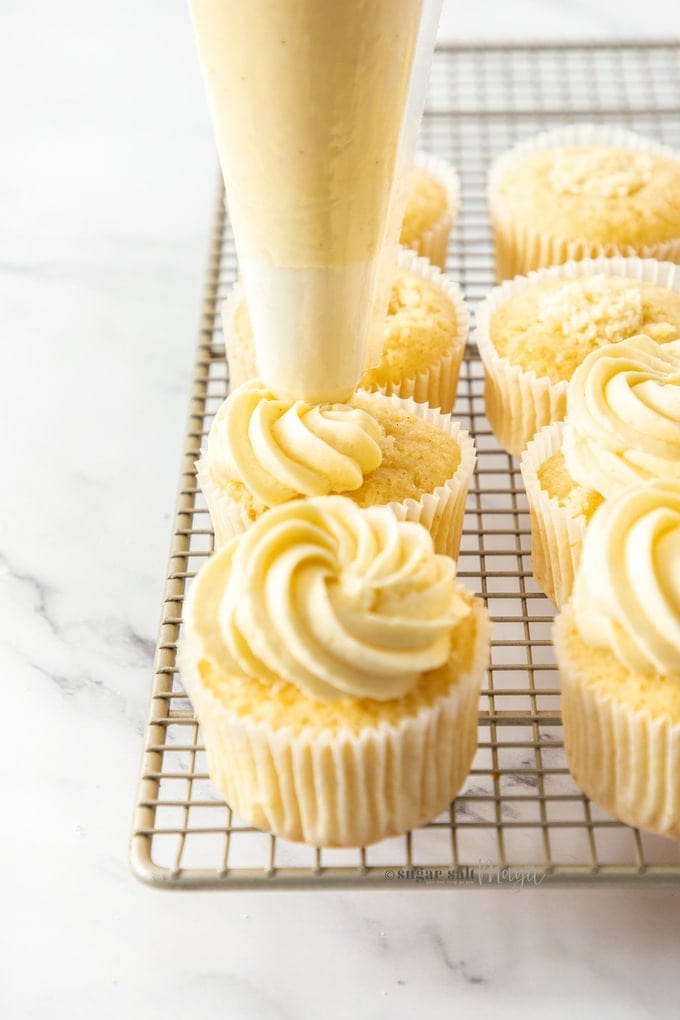
If you’ve never tried making German buttercream, you really need to try this. It has a lovely flavour and it’s perfect for those who don’t like heavy, sweet frostings. It’s soft, light and creamy and is perfect for filling cream puffs, profiteroles or cream horns as well as for frosting cakes and cupcakes.
To see this buttercream in action, check out these Vanilla Cupcakes with German Buttercream.
Want Egg Free Buttercream recipes?
If you prefer an egg free buttercream, try one of these frosting recipes:
Never Miss a Recipe!
Get the latest recipes straight to your inbox!
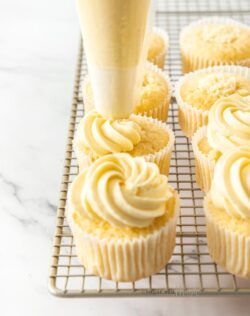
Ingredients
FOR THE PASTRY CREAM
- 1 ½ cups whole milk (375ml)
- 2 teaspoons vanilla extract
- 150 g caster sugar (superfine sugar), divided in half (¾ cup / 5.3oz)
- 35 g cornflour (US cornstarch) (¼ cup / 1.2oz)
- 2 egg yolks
FOR THE BUTTERCREAM
- 226 g unsalted butter, room temperature (1 cup / 2 sticks)
- ¼ teaspoon salt
For best results, always weigh ingredients where a weight is provided
Equipment
Instructions
FOR THE PASTRY CREAM
- Pour 1 ¼ cups of milk into a heavy based saucepan, and add roughly half cup of sugar and the vanilla. Heat on low heat until steaming, stirring regularly. Remove from heat.
- In a large bowl, whisk together the remaining ¼ cup milk, egg yolks and cornflour until smooth and fully combined.
- While whisking, very slowly pour the hot milk mixture into the egg mixture in a slow but steady stream. Don’t pour it too quickly or the heat will scramble the eggs.
- Once everything is combined, return the mix to the saucepan. Heat over medium heat, stirring with a whisk constantly, until it gets very thick and no longer settles into itself when you move it around. This will happen quite quickly after about 5 minutes so it’s important to keep gently whisking increasing intensity as it gets very thick. Continue cooking while whisking for another minute. You will end up with lumpy custard if you don’t.
- Swap to a silicone spatula and pass the custard through a strainer into a clean bowl, then press plastic wrap to the surface and allow to cool to room temperature.
- Pass the custard through a strainer into a clean bowl, the press plastic wrap to the surface and allow to cool to room temperature.
FOR THE BUTTERCREAM
- Use an electric butter, or a stand mixer with paddle attachment to whip the butter and remaining ¼ cup of sugar for about 5 minutes or until it looks very light and airy.
- Add the custard, 1 spoonful at a time, beating for a few seconds to incorporate, before adding the next. Beat well for another minute or so.
- Finally mix through the salt.
- Use a silicone spatula and just spend a minute stirring and pressing the buttercream against the side of the bowl just to remove any big air bubbles that might make piping difficult.
Notes
- Sugar: you can swap the caster sugar in the buttercream for granulated white sugar but don’t use powdered or icing sugar.
- This recipe will top 12 cupcakes generously.
This post may contain affiliate links that earn me a small commission for my referral, at no extra cost to you. Thank you for supporting Sugar Salt Magic.

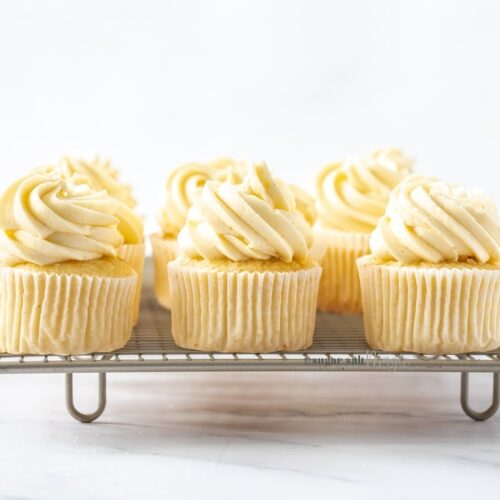
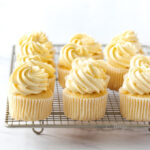
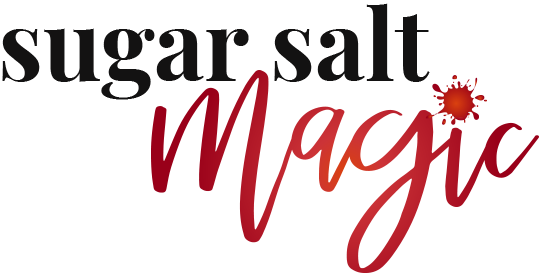
10 Comments on “How to make German Buttercream”
Hi, is the correct ingredient cornflour or cornstarch?
Hi Karen. Just to be confusing, it’s both. What we call cornflour in Australia is called cornstarch in the US. I’m not sure what other countries call it though. You’re looking for a very fine powder that’s often used as a thickening agent in sauces and custards.
Hello Marie. Love your page. I am looking for the German butter cream recipe using custard powder. I can’t find it on your site. Could you possibly send me the recipe please?
Many thanks,
Wendy
Hi Wendy. I’ve just moved it to below the recipe card in this recipe. Jump to recipe, then scroll to just below and it’s right there.
Hi…love this but not comfortable
with egg yolks What is the substitute for egg yolks .can I use custard powder.? Thank you.
Hi Violet, great question. I have a list of buttercreams above the recipe card that don’t require eggs or you can find a custard powder buttercream recipe below the recipe card on this post.
If your concern is that the egg yolks are not cooked, they definitely are. The base of this buttercream is creme patissiere which is used regularly in desserts like fruit tart to profiteroles and eclairs. The yolks are cooked and very safe to eat.
Whichever you choose, enjoy 🙂
Made this recipe and it turned out well and was delicious.
At the top of the recipe it says
cook time: 9 HOURS 50 MINUTE.not sure but probably a typo
Thanks Marie
So happy you loved it Kim. Oops that time doesn’t look right – thanks for the heads up.
Just made both your Fluffy Vanilla cake and cupcakes (both outstanding!) I am having a bit of an issue with the German buttercream – I don’t feel the ratio of butter to pastry cream is good if it is to be piped – the texture was very pudding-like and would be nice for filling something like a cream puff (profiterole) but it was much too soft for piping. I ended up adding close to another full cup of butter – I then found it to be the exact texture I was striving for – I then piped on the cupcakes.
I enjoy your site very much and have recommended it to my friends (the ones that bake, anyway!)
Hello Nancy, yes it should be a soft buttercream which is what makes it so light and creamy. I’m so happy you’re enjoying the recipes.